Ingredient Spotlights
How to Cooking with Fresh Herbs: Tips and Tricks
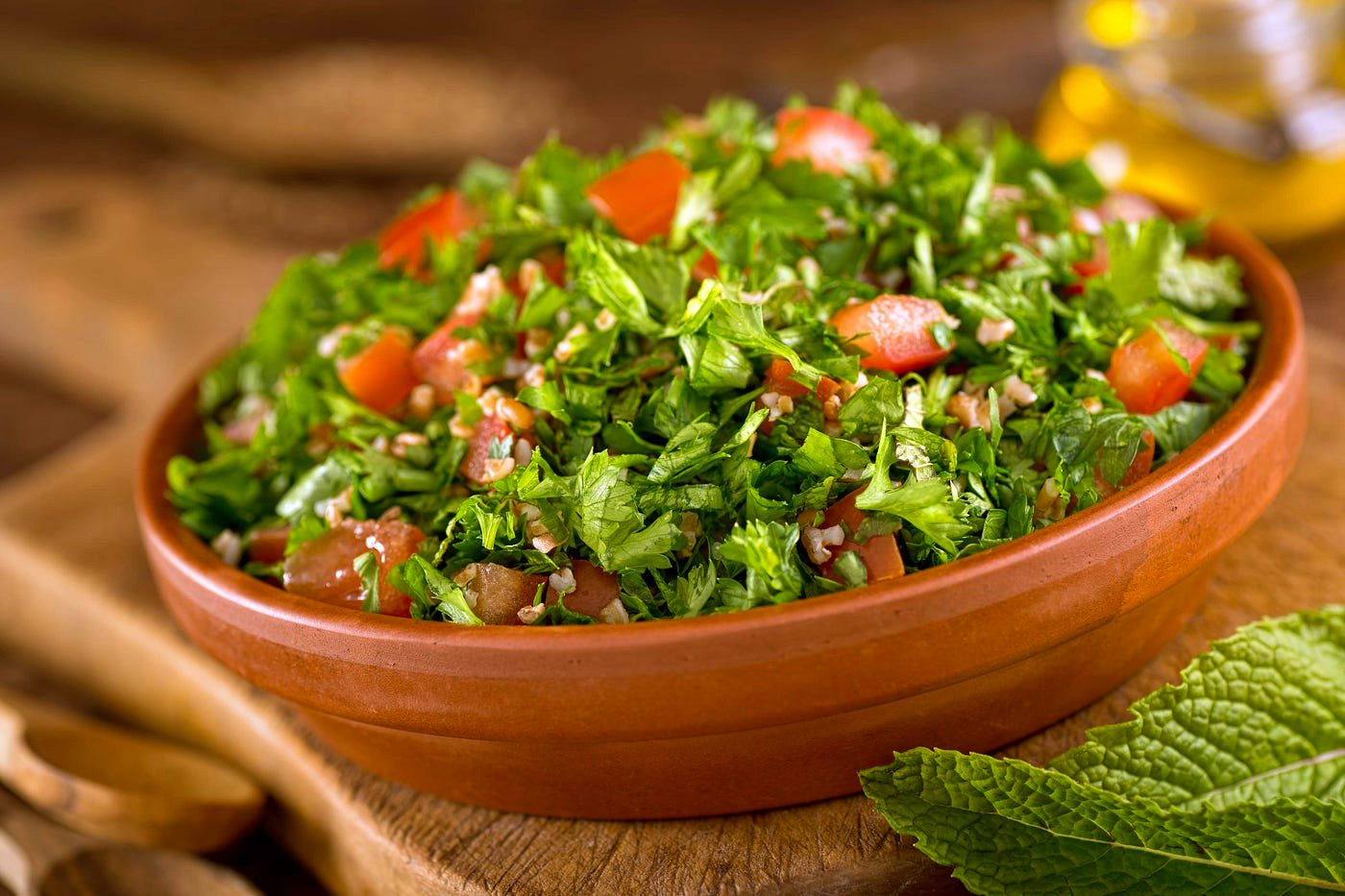
The Benefits of Cooking with Fresh Herbs
When it comes to elevating your culinary creations, the benefits of cooking with fresh herbs are unparalleled. Unlike their dried counterparts, fresh herbs offer a burst of vibrant flavors and aromas that can transform any dish from ordinary to extraordinary. But the advantages don’t stop at taste; there are numerous health benefits of fresh herbs that make them a must have in your kitchen.
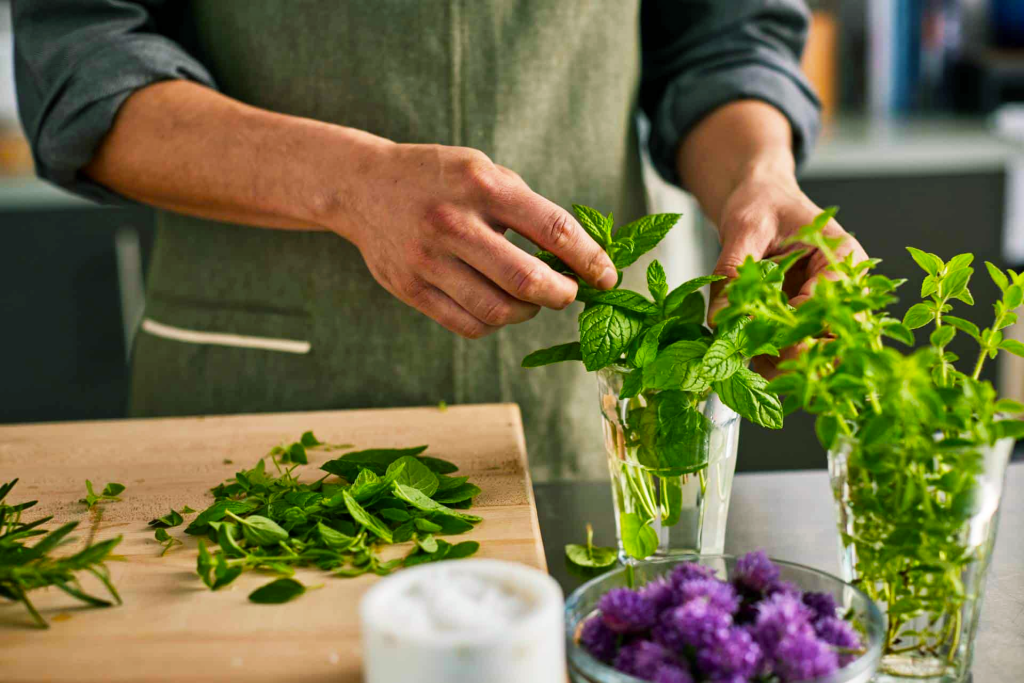
Fresh vs dried herbs is a common debate among home cooks and professional chefs alike. While dried herbs have their place, they often lack the nuanced flavors and essential oils that make fresh herbs so special. Fresh basil, for instance, provides a sweet, peppery kick that simply can’t be replicated by its dried version.
Health benefits of fresh herbs are another compelling reason to incorporate them into your meals. Herbs like parsley, cilantro, and mint are packed with essential vitamins and antioxidants that support overall well-being. For example, rosemary has been shown to improve digestion and boost memory function.
The flavor enhancement provided by fresh herbs means you can reduce the need for added salts or sugars in your recipes. This not only makes your dishes healthier but also allows the natural flavors of your ingredients to shine through.
Nutritional value is another area where fresh herbs excel. They are low in calories yet rich in nutrients like vitamin C, vitamin K, and iron. Incorporating a variety of these green powerhouses into your diet can contribute significantly to meeting your daily nutritional needs.
Essential Fresh Herbs Every Home Cook Should Have
When it comes to elevating your home cooked meals, nothing beats the flavor and aroma of fresh herbs. Cultivating a small herb garden can transform your culinary creations, bringing a burst of freshness to every dish. Here are some essential fresh herbs that every home cook should have:
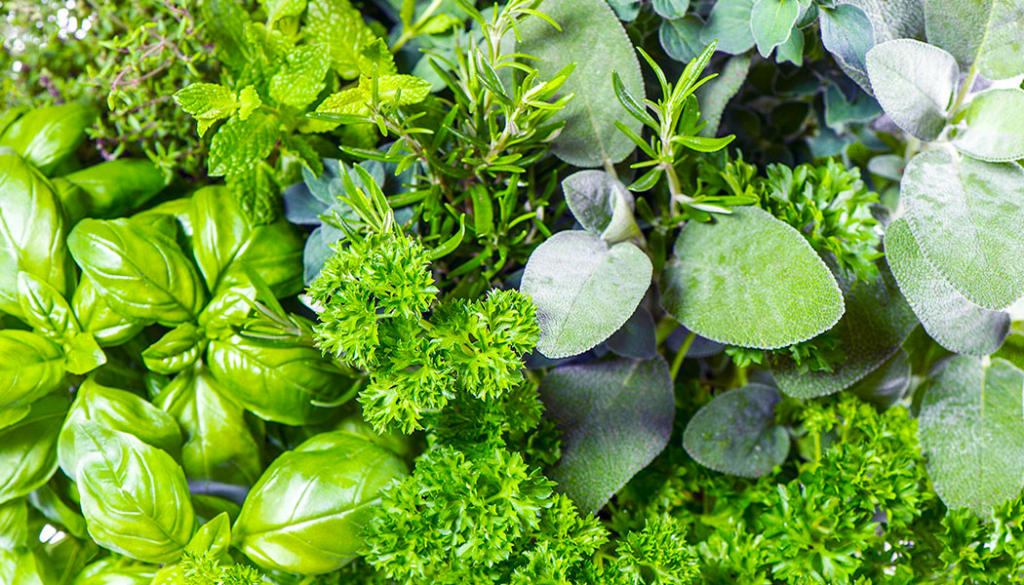
Basil: Often referred to as the king of herbs, basil is indispensable in many cuisines. Its sweet and slightly peppery flavor makes it perfect for pesto, caprese salads, and tomato-based sauces. Fresh basil leaves can also be used as a garnish for pizzas and pasta dishes.
Parsley: This versatile herb is more than just a garnish. Flat-leaf (Italian) parsley has a robust flavor that enhances soups, stews, and marinades. Curly parsley adds texture and visual appeal to salads and side dishes.
Cilantro: Known for its distinctive taste, cilantro is essential in Mexican, Indian, and Thai cooking. Its bright citrusy notes make it ideal for salsas, guacamole, curries, and chutneys.
Thyme: With its earthy aroma and subtle lemony flavor, thyme is a must-have in any herb garden. It pairs wonderfully with roasted meats, vegetables, soups, and stews. Thyme retains its flavor well during cooking making it perfect for slow-cooked dishes.
Rosemary: This hardy herb brings a pine-like fragrance that complements roasted lamb or chicken perfectly. Rosemary’s robust nature also makes it excellent for infusing oils or adding depth to bread doughs like focaccia.
By incorporating these common culinary herbs into your kitchen repertoire you not only enhance the flavors of your dishes but also enjoy the health benefits they offer such as antioxidants vitamins A C K iron calcium among others Start growing these must-have fresh herbs today experience firsthand how they can elevate your everyday meals from ordinary extraordinary
How to Properly Store and Preserve Fresh Herbs for Maximum Flavor
When it comes to elevating your culinary creations, nothing beats the vibrant flavor of fresh herbs. However, preserving that burst of freshness can be a challenge if you don’t know the proper techniques. Here’s how you can master storing fresh herbs to ensure maximum flavor in every dish.
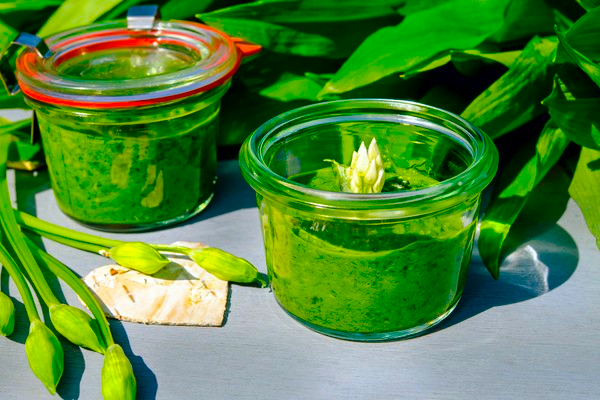
Always start with the freshest herbs possible. Once you’ve brought them home, give them a gentle rinse and pat them dry with a paper towel. For tender herbs like basil, cilantro, and parsley, treat them like a bouquet of flowers: trim the stems and place them in a glass of water. Cover the leaves loosely with a plastic bag and store them in the refrigerator. This method keeps your herbs hydrated and vibrant for up to two weeks.
For heartier varieties such as rosemary, thyme, or sage, wrap them in a slightly damp paper towel before placing them inside an airtight container or zip-lock bag. This technique maintains just enough moisture without making the leaves soggy.
Freezing fresh herbs is another excellent way to preserve their essence for longer periods. Simply chop your herbs finely and pack them into ice cube trays topped off with water or olive oil before freezing. These herb cubes are perfect for dropping directly into soups, stews, or sauces whenever you need that freshly-picked taste.
By following these herb storage tips whether you’re refrigerating or freezing you’ll be able to savor that garden fresh flavor all year round. Your dishes deserve nothing less than the best ingredients; mastering these techniques will ensure your meals are always infused with aromatic perfection.
Culinary Techniques for How to Cooking with Fresh Herbs
Fresh herbs can elevate any dish from ordinary to extraordinary, and mastering the art of cooking with them is easier than you might think. One essential technique to enhance flavors is creating herb infused oils and vinegars. These simple infusions capture the essence of herbs like basil, rosemary, or thyme, providing a flavorful base for dressings, marinades, or even drizzling over finished dishes.
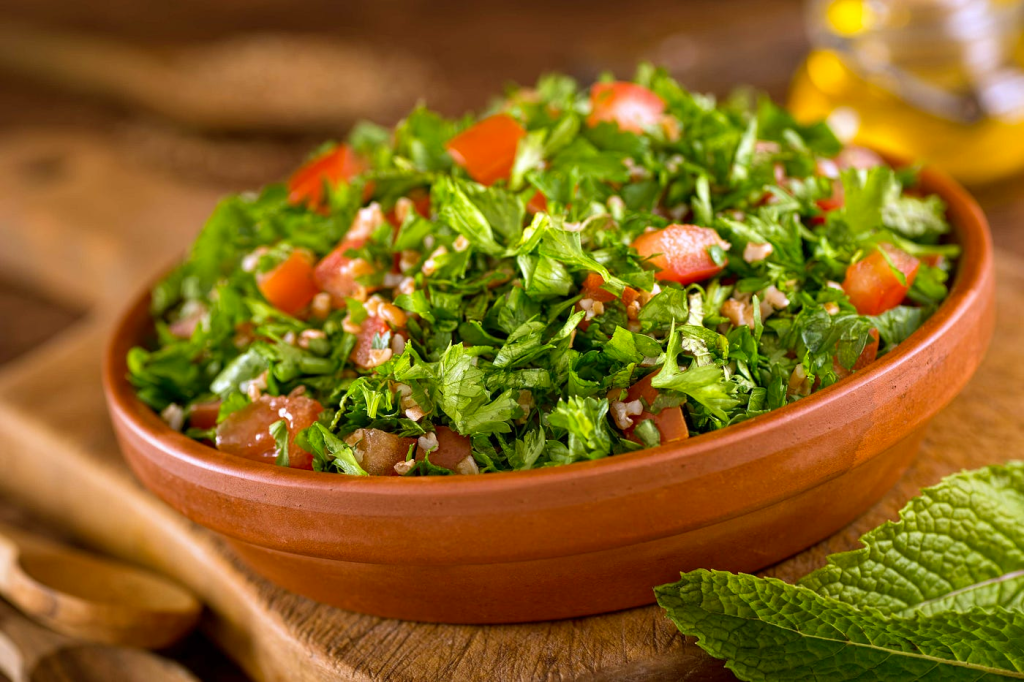
When it comes to preparing herbs, the debate between chopping vs tearing herbs is crucial. Chopping releases more oils and flavors quickly but can bruise delicate leaves like basil or cilantro. Tearing by hand is gentler and preserves the herb’s integrity and subtle nuances perfect for garnishing salads or pastas.
Timing is everything when incorporating herbs into your cooking techniques. Hardy herbs such as rosemary and thyme benefit from being added early in the cooking process; their robust flavors need time to meld with other ingredients. On the other hand, delicate herbs like parsley and chives should be added at the last minute to maintain their fresh taste and vibrant color.
By understanding these culinary techniques for using fresh herbs from making herb-infused oils and vinegars to knowing when to chop versus tear you’ll unlock new dimensions of flavor in your dishes. Start experimenting today, and watch how these small adjustments make a big impact on your culinary creations.
The Best Herb Combinations for Different Cuisines and Dishes
When it comes to elevating your culinary creations, the right herb combinations can make all the difference. Understanding herb pairings by cuisine ensures that each dish you prepare is bursting with authentic flavor. Let’s explore some of the best herb combinations for various cuisines and dishes.
For Italian cuisine, basil and oregano are a match made in heaven, especially for tomato based sauces and pizzas. Mediterranean dishes often shine with the combination of rosemary and thyme, perfect for roasted meats or hearty vegetable stews.
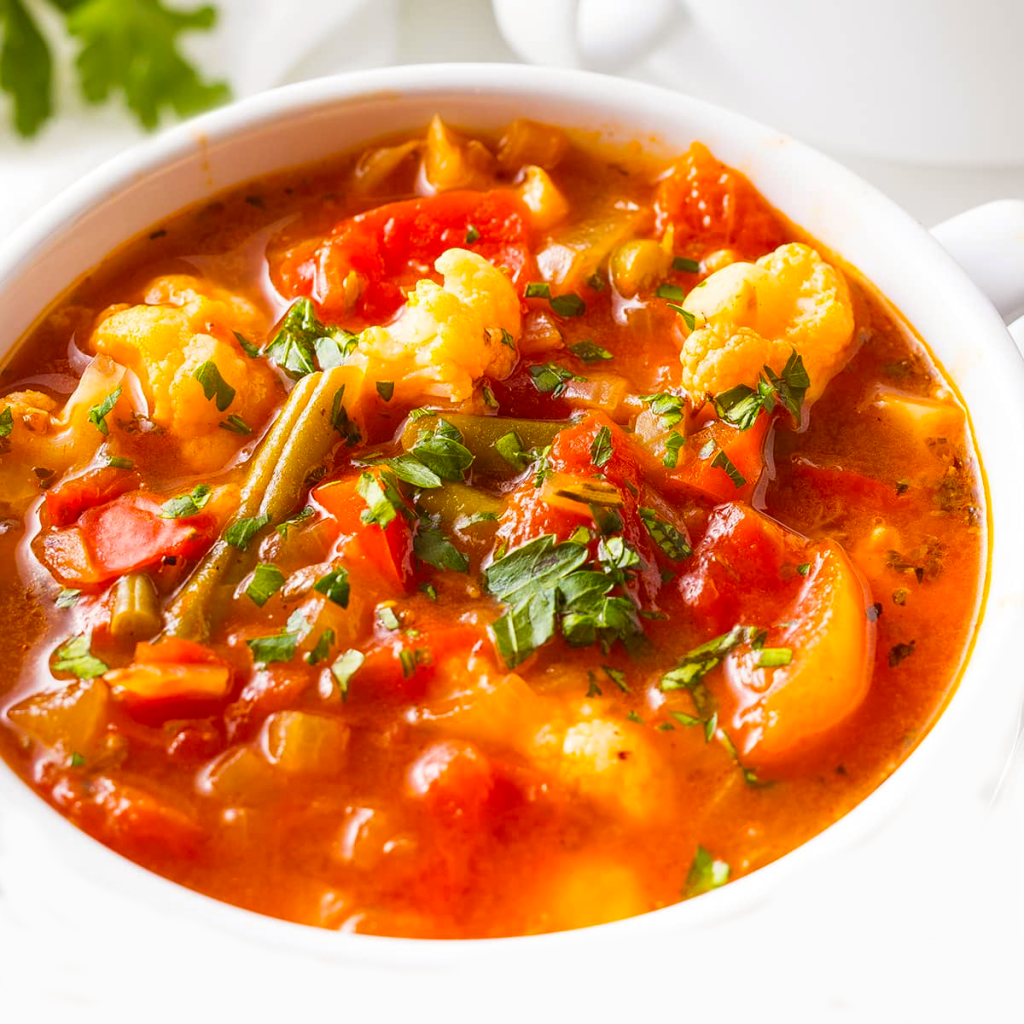
Asian cuisine thrives on the vibrant blend of cilantro and mint, which adds a refreshing twist to salads, soups, and even desserts. When preparing meat dishes, consider pairing sage with thyme for poultry or rosemary with garlic for lamb to enhance their natural flavors.
Vegetarian dishes benefit greatly from dill paired with parsley ideal for fresh salads or creamy dips. Soups come alive with bay leaves combined with thyme; this duo infuses broths with a rich depth of flavor.
Even desserts can reach new heights when you incorporate herbs like lavender paired with lemon verbena an exquisite combination that works wonderfully in cakes or sorbets.
Incorporating these best herb combinations into your cooking not only enhances taste but also brings an authentic touch to each dish. So next time you’re in the kitchen, remember these pairings to create memorable meals that delight every palate.
Troubleshooting Common Issues When Using Fresh Herbs in Recipes
Using fresh herbs can elevate any dish, but it’s essential to know how to avoid common pitfalls that can lead to overpowering flavors. One frequent mistake is not balancing the seasoning correctly. Fresh herbs are potent, and a little goes a long way. To achieve the perfect balance, start with small amounts and taste as you go. Gradually add more if needed; this method ensures you don’t overwhelm your dish.
If you find yourself with an over herbed dish, don’t panic there are ways to fix it. Diluting the recipe by adding more of the base ingredients can help mellow out strong herbal notes. For example, if you’ve added too much basil to a tomato sauce, consider adding more tomatoes or even some cream to balance it out.
Common mistakes when using fresh ingredients often stem from improper handling or storage. Always wash herbs thoroughly and pat them dry before use; excess moisture can dilute their flavor and affect your dish’s texture.
Take tips from chefs on using fresh produce correctly: store herbs properly by wrapping them in damp paper towels and placing them in plastic bags in the fridge. This keeps them fresh longer and preserves their vibrant flavors.
By following these guidelines, you’ll not only avoid overpowering flavors with fresh herbs but also master how to balance seasoning effectively, ensuring each meal is a culinary delight.
Conclusion: Start Incorporating Fresh Herbs into Your Recipes Today! By adding fresh herbs to your culinary creations, you can elevate the flavors of your dishes to new heights. Fresh herbs not only enhance taste but also bring a burst of vibrant color and enticing aroma, transforming even the simplest meals into gourmet experiences.
Furthermore, many herbs have health benefits that can contribute to your overall well-being. So why wait? Begin using fresh herbs in your cooking now and savor the delightful difference they make in every bite!
Ingredient Spotlights
The 7 Best Ingredients You Must Try in 2025
Whether you’re a home cook, a food enthusiast, or someone passionate about eating health-conscious meals, your ingredients can transform your dishes into something extraordinary. The 7 Best Ingredients You Must Try in 2025 is all about maximizing flavor, nutrition, and versatility. Below, we introduce you to seven standout ingredients and show you how to make the most of them in your kitchen.

Why It Stands Out
Rotisserie chicken isn’t just convenient—it’s a flavor-packed foundation for countless quick and delicious meals. Using leftovers helps reduce food waste and saves time on meal preparation.
How to Use It
- Salads: Shred the chicken and toss it into a Caesar salad or a fresh garden mix.
- Sandwiches & Wraps: Use it as a protein-packed filling with your favorite condiments.
- Pizza Topping: Sprinkle on a homemade pizza with barbecue sauce, cheese, and red onions.
Rotisserie chicken’s versatility ensures that a single ingredient can produce a variety of meals in no time.
- Spice Bombs for Cooking
Why It Stands Out
Pre-made spice bombs—custom spice blends stored in reusable containers—are your gateway to unlocking complex flavors in seconds. They make seasoning dishes simple and accessible while encouraging experimentation.
How to Use It
- Custom Blends: Create combinations like Cajun, Moroccan, or Italian, and seal them in jars for easy use.
- Quick Fixes: Sprinkle onto meats, roasted vegetables, or soups for an instant flavor boost.
- Flavor Profiles: Mix spices with oils for marinades or drizzle over finished dishes.
Spice bombs allow you to elevate everyday recipes with minimal effort, keeping meals exciting and flavorful.
- Eggs – The Versatile Powerhouse
Why It Stands Out
For a reason, eggs remain a staple ingredient—they’re packed with protein, affordable, and incredibly versatile. They turn up in cuisines worldwide and adapt to any meal of the day.
How to Use It
- Binding Agent: Use eggs in baking to hold cakes, muffins, and other baked goods together.
- Soups & Sauces: Add a whisked egg to soups or creamy sauces for richness and body.
- Protein Boost: Make poached eggs for salads or rice bowls to add texture and protein.
Their ability to excel in savory or sweet recipes makes eggs a must-have in any kitchen.
- Olive Oil – The Ultimate Cooking Companion
Why It Stands Out
Olive oil doesn’t just enhance dishes with its rich, fruity flavor—it’s also a powerful source of antioxidants and healthy fats. A true star in both cooking and raw preparations, olive oil is practically essential.
How to Use It
- Sautéing and Roasting: Use it as a base for frying vegetables, meats, or tofu.
- Salad Dressings: Blend olive oil with vinegar or lemon juice for a light, tangy dressing.
- Flavor Enhancement: Opt for extra-virgin olive oil and drizzle it over completed dishes like pasta or bread for a flavorful finish.
Cooking with olive oil is as much about enhancing taste as improving your overall health.
- Seasonal Vegetables – Nature’s Best Gift
Why It Stands Out
Seasonal vegetables aren’t just fresher—they’re more flavorful and often more affordable. They allow you to support local produce and craft vibrant, nutrient-packed meals.
How to Use It
- Plan Your Meals Around the Season: Make roasted root vegetables in winter or fresh stir-fries with summer zucchini.
- Experiment with Cooking Methods: Steam, grill, roast, or pickle them to explore new textures and flavors.
- Boost Color: Add a rainbow of seasonal vegetables to your dishes for a healthy and visually appealing meal.
Seasonal vegetables aren’t just about taste—they’re about connecting to the cycle of nature and what it offers.
- Fresh Herbs – Flavor Enhancers
Why It Stands Out
Fresh herbs elevate flavor and add color, scent, and sophistication to any dish. From parsley to cilantro to basil, herbs can transform your cooking from ordinary to extraordinary.
How to Use It
- Add at the End: Sprinkle chopped herbs over finished dishes to preserve their bright flavor and color.
- Use in Marinades: Blend herbs with olive oil, garlic, and lemon for marinades or dressings.
- Pair with Salads: Toss leafy herbs like parsley or cilantro into salads for a fresh and fragrant bite.
The secret to maximizing fresh herbs is to use them thoughtfully, letting their natural flavors shine.
- Avocados – The Delicious Superfood
Why It Stands Out
Creamy, nutrient-rich, and incredibly versatile, avocados are a staple ingredient for health-conscious cooks. They’re packed with healthy fats, vitamins, and minerals, making them both a satisfying and wholesome choice.
How to Use It
- Guacamole: Mix ripe avocados with lime juice, onions, and tomatoes for the perfect dip.
- Smoothies: Blend avocado into smoothies for a creamy texture and added nutrients.
- Healthy Baking Substitute: Use mashed avocado instead of butter or oil for moist and healthy baked goods.
Avocados combine nutrition and indulgence, proving to be a versatile ingredient you’ll want in every meal.
Final Thoughts
Each of these seven ingredients offers unique benefits, flavors, and countless opportunities to experiment in the kitchen. Incorporating them into your meals will elevate your cooking game and bring more flavor and excitement to your dishes.
Whether you’re repurposing leftover rotisserie chicken for quick meals, mastering spice blends, or drizzling olive oil over seasonal vegetables, the possibilities are endless.
Try these ingredients in 2025 and watch your cooking skills flourish!
Ingredient Spotlights
Leftover Rotisserie Chicken Recipes Best to Try
Leftover rotisserie chicken recipes often finds its way into our refrigerators after we enjoy a quick, hassle-free dinner. But what should you do with those flavorful, tender leftovers? Instead of throwing it out or tossing it onto a salad, why not use it as the foundation for a delicious and satisfying new meal? With creativity and simple pantry staples like rice, pasta, vegetables, beans, and spices, leftover chicken can be transformed into exciting dishes to impress your testbeds. Here’s a roundup of ideas for every occasion, including cooking skill level and time constraints.
Why Use Leftover Rotisserie Chicken?
Rotisserie chicken is already perfectly cooked and seasoned, making it a time-saving ingredient. It’s incredibly versatile, as its shredded or diced pieces can enhance soups, stir-fries, casseroles, and more. Plus, it’s a great way to reduce food waste and stretch your grocery budget!
Quick Meal Ideas (Under 30 Minutes)
Chicken and Vegetable Stir-fry
A stir-fry is a quick and healthy way to use up leftovers. Here’s how to make an easy chicken and vegetable stir-fry:
- Ingredients Needed: Leftover chicken, mixed vegetables, soy sauce, garlic, and ginger.
- Steps:
- Heat a tablespoon of oil in a pan or wok.
- Sauté garlic and ginger for 1–2 minutes until fragrant.
- Add your mixed vegetables and stir-fry until tender.
- Toss in shredded chicken, soy sauce, and a pinch of spices like cumin or paprika.
- Cook for 2–3 more minutes—serve with rice or noodles.
Quick Chicken Soup
Make a hearty chicken soup perfect for chilly weather (or to fight off a cold).
- Ingredients Needed: Chicken, chicken broth, mixed vegetables, onion, garlic, rice or pasta, thyme, and oregano.
- Steps:
- Sauté chopped onion and garlic in a large pot until soft.
- Add chicken broth, diced vegetables, and a handful of rice or cooked pasta.
- Simmer for 10–15 minutes until the rice or pasta is tender.
- Stir in shredded chicken and season with thyme, oregano, salt, and pepper.
- Ladle into bowls and enjoy!
Chicken Quesadillas
These cheesy, crispy quesadillas come together in minutes.
- Ingredients Needed: Chicken, shredded cheese, tortillas, onion, and bell peppers.
- Steps:
- Sauté diced onion and bell peppers in a pan.
- Add shredded chicken and your favorite spices, like chili powder or cumin.
- Place the chicken mixture on a tortilla, sprinkle with cheese, then fold in half.
- Heat the quesadilla in a skillet on both sides until golden brown and crisp.
- Slice into triangles and serve with salsa or guacamole!
One-Pot Wonders
Chicken and Rice Casserole
This comforting dish is the definition of easy and satisfying.
- Ingredients Needed: Rotisserie chicken, rice, chicken broth, mixed vegetables, and shredded cheese.
- Steps:
- Preheat your oven to 375°F.
- Mix cooked rice, shredded chicken, vegetables, and broth in a baking dish.
- Season with thyme, paprika, salt, and pepper.
- Sprinkle shredded cheese on top and bake uncovered for 25–30 minutes until bubbly.
Chicken Chili
Warm up with a spicy and filling bowl of chili.
- Ingredients Needed: Chicken, canned black beans, canned diced tomatoes, onion, garlic, chili powder, and cumin.
- Steps:
- Sauté onion and garlic in a pot until fragrant.
- Stir in diced tomatoes, black beans, shredded chicken, chili powder, and cumin.
- Simmer for 15–20 minutes, stirring occasionally.
- Serve with tortilla chips, sour cream, and chopped cilantro.
One-Pot Chicken Pasta
Who doesn’t love a creamy, flavorful pasta dish?
- Ingredients Needed: Chicken, pasta, chicken broth, garlic, heavy cream (or milk), shredded Parmesan, and spinach.
- Steps:
- Cook garlic in a large pot until fragrant.
- Add pasta, chicken broth, and cream, bringing it to a boil.
- Simmer until the pasta is cooked, and the sauce thickens slightly.
- Stir in chicken, spinach, Parmesan, and season to taste.
Crowd-Pleasing Dishes
Chicken Enchiladas
Perfect for family dinners or gatherings.
- Ingredients Needed: Chicken, tortillas, enchilada sauce, shredded cheese, onion, and bell peppers.
- Steps:
- Preheat your oven to 375°F.
- Roll shredded chicken, sautéed onion and peppers, and some cheese inside tortillas.
- Place them seam-side down in a baking dish and pour enchilada sauce over the top.
- Sprinkle with more cheese and bake for 20–25 minutes until bubbly.
Give the classic dish a twist with chicken.
Chicken Shepherd’s Pie
- Ingredients Needed: Rotisserie chicken, mixed vegetables, mashed potatoes, chicken broth, and butter.
- Steps:
- Preheat your oven to 400°F.
- Sauté vegetables with butter until soft; add chicken broth and shredded chicken.
- Spread the mixture in a baking dish and layer mashed potatoes on top.
- Bake for 20–25 minutes until golden brown on top.
Elevated Recipes for Special Occasions
Chicken and Bean Stew
This hearty and healthy stew is perfect for an elegant yet fuss-free dinner.
- Ingredients Needed: Chicken, canned chickpeas, canned tomatoes, chicken broth, onion, garlic, paprika, and cumin.
- Steps:
- Sauté onion and garlic in a Dutch oven.
- Add canned tomatoes, chicken broth, and spices.
- Stir in chickpeas and shredded chicken, letting everything simmer for 20–30 minutes.
- Serve with crusty bread.
Chicken Pot Pie
Indulge in a flaky, savory pie that feels like a warm hug.
- Ingredients Needed: Chicken, mixed vegetables, chicken broth, heavy cream, and pie crust or puff pastry.
- Steps:
- Cook vegetables in chicken broth and cream to create a rich filling.
- Stir in shredded chicken and pour the mixture into a pie dish.
- Cover with pie crust or puff pastry; crimp the edges and cut air vents.
- Bake at 375°F for 30–35 minutes until golden.
Bonus Tip: Freeze for Later Meals
If you don’t have time to cook all those leftover chicken dishes right away, don’t worry! Rotisserie chicken freezes beautifully. Portion it into freezer bags and store it for up to three months. When ready, pull it out for one of these recipes to enjoy a no-fuss dinner.
Final Thoughts
Using up leftover rotisserie chicken doesn’t have to mean eating the same meal twice. With these creative ideas, you can transform those flavorful leftovers into new and exciting dishes, from soups and stir-fries to casseroles and pies.
Do you have your favorite leftover chicken recipe or a twist on one of these ideas? Share your thoughts and kitchen experiments in the comments below. Waste less, enjoy more—and happy cooking!
Ingredient Spotlights
Spice Bombs for Cooking: Unlock the Flavor
What are Spice Bombs and Why You Should Use Them in Your Cooking
Spice bombs, also known as flavor bombs or seasoning blends, are a culinary innovation designed to elevate your cooking with minimal effort. These concentrated mixtures of herbs, spices, and sometimes other ingredients like garlic or onion powder pack a powerful punch of flavor. By incorporating spice bombs into your dishes, you can easily add depth and complexity to your meals without measuring individual spices.

Cooking with spices is an age-old practice that enhances the taste and aroma of food. However, for many home cooks, blending multiple spices can be daunting. This is where spice bombs come in handy. They simplify the process by providing a pre-mixed combination that always ensures consistent and balanced seasoning.
Using spice mixes in your cooking saves time and encourages experimentation with new flavors and cuisines. Whether preparing a quick weeknight dinner or an elaborate weekend feast, spice bombs can be your secret weapon for effortlessly creating deliciously seasoned dishes.
The Benefits of Using Spice Bombs in Your Daily Meals
Incorporating spice bombs into your daily meals can revolutionize your cooking experience, offering numerous advantages beyond enhancing flavor. Spice bombs, which are pre-mixed blends of various spices, provide an easy seasoning solution that simplifies meal preparation and saves time in the kitchen.

One of the primary health benefits of spices is their rich content of antioxidant and anti-inflammatory properties. For instance, turmeric contains curcumin, known for its anti-inflammatory effects, while cinnamon can help regulate blood sugar levels. By using spice bombs, you ensure a consistent intake of these beneficial compounds without the hassle of measuring out individual spices each time you cook.
Spice bombs also effortlessly enhance flavor. Whether preparing a quick stir-fry or slow-cooking a stew, these blends infuse your dishes with complex tastes that might be challenging. This not only elevates the culinary experience but also encourages healthier eating habits by making nutritious meals more appealing.
Spice bombs are a fantastic time-saving cooking tip. Instead of rummaging through your pantry for multiple seasonings and measuring precise amounts, you can add a pre-made spice bomb to your dish. This convenience is particularly useful for busy people who still want to enjoy home-cooked meals without compromising on taste or nutritional value.
Using spice bombs in your daily meals offers significant benefits, ranging from improved health due to spices’ beneficial properties to enhanced flavors and more efficient meal preparation. Embrace this simple yet effective tool to transform your cooking routine and enjoy deliciously seasoned dishes with minimal effort.
How to Make Your Spice Bombs at Home: Simple Recipes and Ideas
Creating your spice bombs at home is a fantastic way to elevate your culinary creations with personalized flavors. Not only do homemade spice mixes allow you to control the ingredients and avoid preservatives, but they also offer endless customization possibilities. Here are some simple recipes and ideas for DIY spice bombs that will transform your kitchen.

Basic Spice Bomb Recipe
Start with an essential blend that can be used in various dishes. Combine equal parts of the following spices:
Mix these ingredients thoroughly and store them in an airtight container. This versatile blend can be sprinkled on meats, vegetables, or even popcorn for a burst of flavor.
Mediterranean Spice Blend
For those who enjoy Mediterranean cuisine, try this custom seasoning blend:
- two tablespoons of dried oregano
- one tablespoon of dried basil
- one tablespoon dried thyme
- one teaspoon ground cumin
- one teaspoon ground coriander
- one teaspoon of sea salt
This mixture works wonderfully on grilled chicken, roasted vegetables, or bread dips mixed with olive oil.
Spicy Taco Seasoning
If you’re a fan of Mexican food, this DIY spice bomb will be indispensable:
- two tablespoons of chili powder
- one tablespoon of ground cumin
- one teaspoon of paprika
- one teaspoon of garlic powder
- one teaspoon of onion powder
- ½ teaspoon crushed red pepper flakes (optional for extra heat)
Use this blend to season taco meat and beans, or sprinkle it over nachos for an extra kick.
Sweet and Savory BBQ Rub
Perfect for summer barbecues or oven-baked ribs:
- Three tablespoons of brown sugar
- two tablespoons smoked paprika
- one tablespoon of garlic powder
- one tablespoon onion powder
- two teaspoons of mustard powder
- two teaspoons salt
- ½ teaspoon cayenne pepper
Rub this mix generously over your protein of choice before grilling or baking to achieve a sweet and smoky flavor profile.
By creating these homemade spice mixes, you save money and ensure that each meal is tailored to your taste preferences. Experiment with different ratios and additional spices to develop custom seasoning blends that make every dish uniquely yours.
The Best Store-Bought Spice Bombs Worth Trying Out
When it comes to enhancing the flavor of your dishes, commercial spice blends can be a game changer. These top-rated seasonings are crafted to bring out the best in your culinary creations, saving you time and effort in the kitchen. Here are some of the best store-bought spice bombs worth trying out:

1. McCormick Grill Mates Montreal Steak Seasoning: This robust blend is perfect for grilling enthusiasts. With a mix of garlic, coriander, black pepper, and other spices, it’s a go-to for adding bold flavor to steaks and other meats.
2. Trader Joe’s Everything but The Bagel Sesame Seasoning Blend: A favorite among foodies, this seasoning combines sesame seeds, sea salt flakes, dried minced garlic and onion, black sesame seeds, and poppy seeds. It’s versatile enough to sprinkle on avocado toast or mix into dips.
3. Old Bay Seasoning: Known for its distinctive taste that complements seafood wonderfully, Old Bay is a classic blend of celery salt, paprika, black pepper, cayenne pepper, dry mustard powder, and more that has been pleasing palates since 1939.
4. Lawry’s Seasoned Salt: This all-purpose seasoning is ideal for adding depth to various dishes. Its balanced combination of salt and spices, such as paprika and turmeric, makes it a versatile addition.
5. Penzeys Spices North Woods Seasoning: For those who enjoy hearty flavors with a hint of sweetness from bell peppers combined with herbs like thyme and rosemary, this blend is an excellent choice for meats and vegetables alike.
These recommended brand spices are convenient and elevate your cooking by providing complex flavors without the need to measure individual ingredients. Whether you’re looking for pre-made spice mixes that cater to specific cuisines or versatile seasonings that work across different dishes, these commercial spice blends have you covered!
Culinary Tips: How to Incorporate Spice Bombs into Different Dishes
Spice bombs are a fantastic way to elevate your culinary creations, adding depth and complexity to various dishes. Whether you’re a meat lover, vegetarian, or an avid baker, incorporating spice bombs can transform your meals. Here’s how you can use these flavorful blends in different culinary contexts.

Spice bomb recipes can be your secret weapon for meat dishes. For a fiery kick, imagine marinating chicken with a blend of smoked paprika, garlic powder, and cayenne pepper. Or consider rubbing a mixture of cumin, coriander, and turmeric onto lamb chops before grilling to infuse them with Middle Eastern flair.
Vegetarian meals with spices are equally exciting. Toss roasted vegetables in a combination of chili flakes, fennel seeds, and black pepper for an added layer of taste. Spice bombs can also enhance the flavor profile of lentil soups or chickpea stews by incorporating warming spices like cinnamon and clove.
Baking with spice blends opens up another realm of possibilities. Think beyond traditional cinnamon rolls; add cardamom and nutmeg to your dough for an exotic twist. Even simple cookies can benefit from a hint of ground ginger or allspice mixed into the batter.
Global cuisine inspirations using spices offer endless opportunities for creativity in the kitchen. Indian curries often rely on complex spice mixes like garam masala or panch phoron to achieve their signature flavors. Mexican mole sauces use cocoa powder combined with chili peppers for rich depth. Exploring these global traditions can provide fresh ideas on incorporating spice bombs into your cooking repertoire.
Incorporating spice bombs into different dishes enhances flavor and adds nutritional benefits from the various herbs and spices used in these blends. So, next time you’re planning your menu, don’t hesitate to experiment with these powerful little packets of flavor!
Avoiding Common Mistakes When Using Spice Bombs in Cooking
When incorporating spice bombs into your cooking, it’s essential to avoid common mistakes that can quickly turn a delicious dish into an overwhelming experience. One of the most frequent errors is over-seasoning. To prevent this, start with a small amount and gradually add more as needed. Remember, you can always add more seasoning, but fixing an over-seasoned dish is challenging.

Balancing flavors in dishes is another critical aspect to consider. Spice bombs are potent and can dominate other flavors if not used judiciously. Pair strong spices with milder ingredients to create a harmonious blend that enhances rather than masks the natural flavors of your food.
Proper storage of spices is also crucial for maintaining their potency and freshness. Store them in airtight containers away from heat and light to preserve their vibrant flavors. This ensures that each time you use them; they deliver the intended punch without any degradation in quality.
Lastly, understanding how much seasoning to use comes with practice and experience. A good rule of thumb is to taste your dish at different stages of cooking and adjust the seasoning accordingly. This approach helps you achieve the perfect balance without overwhelming your palate or guests.
By following these tips on avoiding common mistakes when using spice bombs in cooking, you’ll be well on your way to creating flavorful and well-balanced dishes every time.
Transform Your Culinary Skills with the Power of Spice Bombs
Incorporating spice bombs into your cooking repertoire can revolutionize your approach to meal preparation. These compact, flavor-packed marvels simplify the seasoning process, ensuring that even novice cooks can achieve complex and well-balanced dishes with minimal effort. By pre-mixing various spices and herbs into readily accessible forms, spice bombs save time and reduce the guesswork for perfect seasoning.
Spice bombs offer versatility that caters to various culinary styles and dietary preferences. Whether you’re aiming to create a rich Indian curry, a zesty Mexican salsa, or a comforting Italian pasta sauce, there’s likely a spice bomb tailored to your needs. This adaptability enhances your existing recipes and encourages experimentation with new flavors and cuisines.
Embracing spice bombs is an excellent way to elevate your cooking skills effortlessly. They provide consistency in flavor while allowing for creative freedom in the kitchen. So, the next time you prepare a meal, consider reaching for a spice bomb to transform ordinary ingredients into extraordinary culinary experiences.

 Ingredient Spotlights9 months ago
Ingredient Spotlights9 months agoSpice Bombs for Cooking: Unlock the Flavor

 World Cuisine5 months ago
World Cuisine5 months ago10 Best Recipes You Must Try in 2025

 World Cuisine9 months ago
World Cuisine9 months agoExploring the Delights of Sweet Basil Thai Cuisine

 Ingredient Spotlights9 months ago
Ingredient Spotlights9 months agoExploring the Versatility of Eggs in Cooking

 Ingredient Spotlights9 months ago
Ingredient Spotlights9 months agoCooking with Seasonal Vegetables: Fresh Meals

 World Cuisine8 months ago
World Cuisine8 months agoThe Best Chicken Hot Dogs Deserve a Spot

 Healthy Cooking8 months ago
Healthy Cooking8 months agoBoost Your Morning with Toddler Breakfast Ideas

 Basic Cooking Techniques9 months ago
Basic Cooking Techniques9 months agoThe Secret to Fluffy Rice Every Time : Perfectly Cooked Rice















